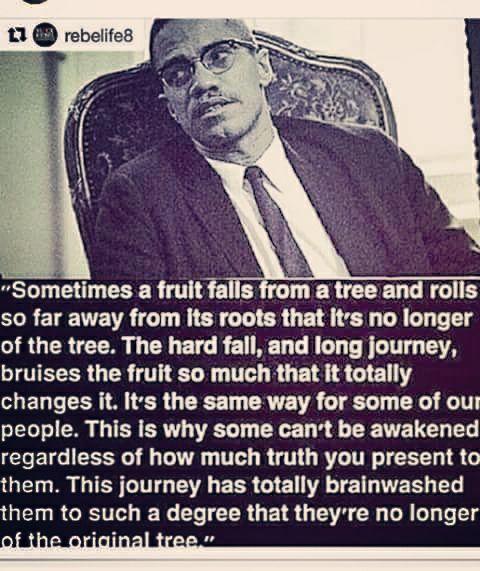
The Trump Disaster
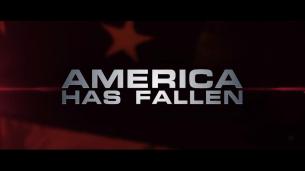 I have witnessed atrocities of major proportions; in fact, black people and Native Americans have since white folk has appeared. True of the matter now where on earth they have been having there been anything close to civil. Malcolm said, “They are devils”! It’s been 400 years and nothing has changed and they would argue that there is no racism or discrimination. Even though 45 screamed racism at every turn their tallying cry was Obama was taking the country in the wrong direction and the want their country back!
I have witnessed atrocities of major proportions; in fact, black people and Native Americans have since white folk has appeared. True of the matter now where on earth they have been having there been anything close to civil. Malcolm said, “They are devils”! It’s been 400 years and nothing has changed and they would argue that there is no racism or discrimination. Even though 45 screamed racism at every turn their tallying cry was Obama was taking the country in the wrong direction and the want their country back!
Prophesy says that just as sure as things begin – they will end. Every day on my facebook stream I see comments’ professing that God is good and that he is a mighty God. My grandma use to say the same thing. Well, he was not good then – nor is he now! Look at the world and especially America. He made it possible for 45 and these so-called preachers tell you, in God’s name, that 45 is good – just give him a chance!
There are many so-called Negroes come out in support of him. I am flabbergasted that today, Dr. King’s son jumped on the Coon train trying to rally to support him. News flash; what has this guy ever done for black people! Just because his father was a martyr does not make him Important or great. True of the matter he can’t get along with his brothers and sisters!
Just look at America; cities flooding, hurricanes ravishing the country, race issues, and sanctioned theorist abound, and we are still stuck in the 1950’s, and we got a racist crook in the White House who has us on the verge of nuclear war! I will say it, many of you fools still waiting and praying to white Jesus – believe what you want but the white man has never done anything but brutalize and rob you! I am dumbfounded that you have not woke up yet. Another thing I hear black folk talking about you being American – you must be insane! And that’s my thought provoking perspective…
Remembering The Greatest Blues Man Robert Johnson
It is a great joy to share the glorious past of the ghost of the greats whose shoulders. The history of black music is littered with tragic figures, and none are more tragic than Robert Johnson’s story that will live for eternity. Legend has it that he sold his soul to the devil at the crossroads for his story to live for all times.
Robert Leroy Johnson is among the most famous of all the Delta Blues musicians whose landmark recordings from 1936-37 display a remarkable combination of singing, guitar skills, and tremendous songwriting talent that have influenced generations of musicians. This amazing, ultimate star-crossed musical genius laid the early framework of rock and roll decades before that term was even imagined.
Not much is known about Johnson’s shadowy, poorly documented life and violent death at age 27, which is one of the reasons that have given rise to his legend. With that being true, the music and legacy he left behind is irrefutable and unparalleled.
He is considered by some to be the “Grandfather of Rock-and-Roll” for his vocal phrasing, original songs, and guitar style. His music has influenced a range of musicians, including Led Zeppelin, Bob Dylan, Jimi Hendrix, The Allman Brothers Band, The Rolling Stones, The White Stripes, The Black Keys, Peter Gabriel, Neil Young, and Warren Zevon. Eric Clapton called Johnson “the most important blues musician who ever lived.
Johnson was conceived in an extramarital affair and born in Hazelhurst, Miss. in 1911. Most of his biographical details have been lost to history, but what’s known is that he learned guitar in his teens, got married, and had a girl who died in childbirth. The death led Johnson to throw himself even deeper into his music. He fled to Robinsonville, Miss. where he was influenced by early blues legends Son House and Willie Brown.
By 1933, Johnson remarried and began playing the guitar professionally. He once related the tale of selling his soul to the devil at a crossroads in exchange for his talent. Johnson tells the story in his song “Crossroads Blues.” Playing for tips up and down the Delta, Johnson gained in popularity. But as he grew in fame and was known as a noted philanderer. He would also walk off in the middle of performances and not be seen or heard from for weeks at a time.
In 1936, he was put in contact with Columbia Records talent scout Ernie Oertle, who took him to San Antonio, Tex. where Johnson recorded classics including “Sweet Home Chicago,” “There’s A Hell Hound On My Trail,” and his signature “Terraplane Blues.”
Johnson began to tour nationally and became known for his unique voice and halting guitar riffs. But in 1938, as the legend goes, the devil caught up with him. While playing at a juke joint, he flirted with a woman whose husband became jealous. The man laced Johnson’s whiskey with strychnine that caused him to become violently ill playing until he collapsed. He died four days later at age 27, although conflicting stories say he survived the poisoning and died later of pneumonia.
There are at least two Mississippi gravesites that bear his name leaving questions about his passing and burial. “The reason, that it’s so powerful a story, is because it is the outline of the tragic side of the music that followed,” said music journalist Alan Light. “Some knew him as a musician, others by legend, but his shadow touches everyone who came out of that time and place.”
Black History is American History and I believe our story is the greatest story ever told. And that’s my Thought Provoking Perspective…
FaceBook @ John T. Wills
Twitter @ John T. Wills
Labor Day: Remember The Slaves Who Built America And Died
We are told to celebrate the 4th of July a day supposedly to honor and embrace freedom, which we have yet to receive. They also want us not to forget 911 and remember the Holocaust, but remarkably “they” don’t want to remember slavery or the sins of their fathers. So on this day, let’s remember the slaves who built America. And that’s my thought provoking perspective…
This Labor Day lets honor the American Slaves who died and suffered to build America
I am the creator and administrator of a FaceBook Group, BLACK EMPOWERED MEN, where all are welcome to join. Someone posted this in the group to which I found it to be an amazing piece of knowledge.
Brave Courageous Men
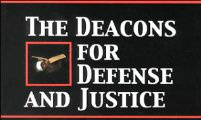 In the 1960s, there was a group of courageous black men from the communities of the southern states called the Deacons for Defense and Justice. It was an armed organization practicing self-defense methods in the face of racist oppression carried out under the Jim Crow Laws by local/state government officials and racist vigilantes. I remember this group of brave black men but because of their stance the Deacons are not written about or cited in the history book or by the Civil Rights leadership.
In the 1960s, there was a group of courageous black men from the communities of the southern states called the Deacons for Defense and Justice. It was an armed organization practicing self-defense methods in the face of racist oppression carried out under the Jim Crow Laws by local/state government officials and racist vigilantes. I remember this group of brave black men but because of their stance the Deacons are not written about or cited in the history book or by the Civil Rights leadership.
Their agenda of self-defense of the community did not fit the image of strict non-violence that leaders such as Dr. King espoused. The Deacons are a segment of the larger tradition of the Black Power movement a tradition dating back to slavery when Africans were chattel slaves to continue the fight for freedom. This refers to the idea that the traditional ideas and values of the Civil Rights Movement placated to the emotions and feelings of White liberal supporters rather than Black Americans, who had to live consistently with the racism and other acts of violence that were shown towards them.
Stokley Carmichael defines Black Power as: “The goal of black self-determination and black self-identity, Black Power, is full participation in the decision-making processes affecting the lives of black people and recognition of the virtues in themselves as black people… Those of us who advocate Black Power are quite clear in our own minds that a ‘non-violent’ approach to civil rights is an approach black people cannot afford, and a luxury white people do not deserve.”
The Deacons were a driving force of Black Power that Stokely Carmichael echoed. Carmichael speaks about the Deacons when he writes, “Here is a group which realized that the ‘law’ and law enforcement agencies would not protect people, so they had to do it themselves…The Deacons and all other blacks who resort to self-defense represent a simple answer to a simple question: what man would not defend his family and home from attack?” The Deacons, according to Carmichael and others were the protection that the Civil Rights needed on local levels, as well as, the ones who intervened in places that the state and federal government fell short.
The Deacons were not the first champions of armed defense during the Civil Rights Movement. Many activists and other proponents of non-violence protected themselves with guns. Fannie Lou Hamer, the eloquently blunt Mississippi militant who outraged LBJ at the 1964 Democratic Convention, confessed that she kept several loaded guns under her bed. Even Martin Luther King Jr., an icon of nonviolence, employed armed bodyguards and had guns in his house during the early stages of the Montgomery Bus Boycott.
In many areas of the “Deep South,” the federal and state governments had no control of local authorities and groups that did not want to follow the laws enacted. One such group, the KKK, is the most widely known organization that openly practiced acts of violence and segregation based on race. As part of their strategy to intimidate this community Negroes, the Ku Klux Klan initiated a “campaign of terror” that included harassment, the burning of crosses on the lawns of African-American voters, the destruction by fire of five churches, a Masonic Hall, a Baptist center, and murder.
Therefore, the Negro community felt it was crucial to have its own protection to curb this terrorism given the lack of support and protection by State and Federal authorities. Enter Earnest “Chilly Willy” Thomas and Frederick Kirkpatrick, founders of the Deacons of Defense in November 1964 to protect civil rights workers, their communities and their families against the Klan. Most of the Deacons were war veterans with combat experience from the Korean War and World War II.
There are many accounts of how the group’s name came about, but according to Lance Hill the most plausible explanation is: “the name was a portmanteau that evolved over a period of time, combining the CORE staff’s first appellation of ‘deacons’ with the tentative name chosen in November 1964: ‘Justice and Defense Club.’ By January 1965, the group had arrived at its permanent name, ‘Deacons for Defense and Justice.’” The organization wanted to maintain a level of respectability and identify with traditionally accepted symbols of peace and moral values portraying the organization as an innocent church group….”
Scholar Akinyele O. Umoja speaks about the group’s effort more specifically. According to Umoja, it was the urging of Stokely Carmichael that the Deacons were to be used as security for many marches and protection of many civil rights leaders. The Deacons had a relationship with nearly all civil rights groups working in the south that advocated and practiced non-violence. The willingness of the Deacons to provide low-key armed guards facilitated the ability of groups such as the CORE, SNCC, and NAACP to stay, at least formally, within their own parameters of non-violence.
An example of the need for self-defense to enable substantial change in the Deep South took place in early 1965. Black students picketing the local high school were confronted by hostile police and fire trucks with hoses. A car of four Deacons emerged and in view of the police, calmly loaded their shotguns. The police ordered the fire truck to withdraw.
This was the first time in the 20th century, as Lance Hill observes, “an armed black organization had successfully used weapons to defend a lawful protest against an attack by law enforcement.” Hill gives as another example: “In Jonesboro, the Deacons made history when they compelled Louisiana Governor John McKeithen to intervene in the city’s civil rights crisis and require a compromise with city leaders — the first capitulation to the civil rights movement by a Deep South governor.”
Roy Innis has said the Deacons “forced the Klan to re-evaluate their actions and often change their undergarments.” With the shift to Northern Black plight and the idea of Black Power emerging in major cities across America. The Deacons became yesterday’s news and organizations such as The Black Panther Party gained notoriety and became the publicized militant Black organization. However, let us not forget the impact of being the precursors and the empowerment of our people. And that’s my thought provoking perspective…
Deacons Of Defense
Remembering: NASCAR’s First Black Driver And Hall Of Famer
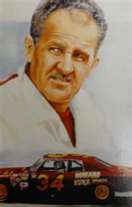 There are millions of NASCAR fans all over the world but do you know that the first NASCAR driver was Wendell Oliver Scott from Danville, Virginia. History has recorded Scott as the only black driver to win a race in what is now the Sprint Cup Series. He could be compared to Jackie Robinson in the sense that he broke the color barrier in Southern stock car racing. The memorable day occurred on May 23, 1952, at the Danville Fairgrounds Speedway.
There are millions of NASCAR fans all over the world but do you know that the first NASCAR driver was Wendell Oliver Scott from Danville, Virginia. History has recorded Scott as the only black driver to win a race in what is now the Sprint Cup Series. He could be compared to Jackie Robinson in the sense that he broke the color barrier in Southern stock car racing. The memorable day occurred on May 23, 1952, at the Danville Fairgrounds Speedway.
Scott gained experience and winning some local races at various Virginia tracks before becoming the first African-American to obtain a NASCAR racing license. It is unclear when the license was issued in 1953, although NASCAR does not have the exact date. As you can imagine, Scott’s career was repeatedly affected by racial prejudice and problems with top-level NASCAR officials. However, his determined struggle as an underdog won him thousands of white fans and many friends and admirers among his fellow racers.
It is said from the day was born he wanted to be his own boss. In Danville, two industries dominated the local economy: cotton mills and tobacco-processing plants. Scott vowed to avoid that sort of boss-dominated life. He once said, “The mill’s looked too much like a prison. You go in and they lock a gate behind you and you can’t get out until you’ve done your time”. From boyhood, Scott raced bicycles against white boys. In his neighborhood, he said, “I was the only black boy that had a bicycle.” He became a daredevil on roller skates, speeding down Danville’s steep hills on one skate.
He ran an auto-repair shop. As a sideline and for fun, he took up the dangerous, illegal pursuit of running moonshine whiskey. This trade gave quite a few early stock car racers their education in building fast cars and outrunning the police. The police caught Scott only once, in 1949. Sentenced to three years probation, he continued making his late-night whiskey runs. On weekends, he would go to the stock car races in Danville, sitting in the blacks-only section of the bleachers, and he would wish that he too could be racing on the speedway.
Scott was thirty years old at the approximate times when he was sitting in the bleachers of local speedways, watching white men race. Up to then, he had lived his whole life under the rigid rules of segregation. He could neither use a white bathroom or a white drinking fountain nor eat at a white restaurant. Nothing in his past had prepared him for the unusual, life-changing experience that was about to take place.
The Danville races were run by the Dixie Circuit, one of several regional racing organizations that competed with NASCAR during that era. Danville’s events always made less money than the Dixie Circuit’s races at other tracks. “We were a tobacco and textile town — people didn’t have the money to spend,” said Aubrey Ferrell, one of the organizers. The officials decided they would try an unusual, and unprecedented, promotional gimmick: They would recruit a Negro driver to compete against the “good ol’ boys.”
To their credit, they wanted a fast black driver, not just a fall guy to look foolish. They asked the Danville police who was the best Negro driver in town. The police recommended the moonshine runner whom they had chased many times and caught only once. Scott brought one of his whiskey-running cars to the next race, and Southern stock car racing gained its first black driver.
Some spectators booed him, and his car broke down during the race. But Scott realized immediately that he wanted a career as a driver. The next day, however, brought the first of many episodes of discrimination that would plague his racing career. Scott repaired his car and towed it to a NASCAR-sanctioned race in Winston-Salem, North Carolina. But the NASCAR officials refused to let him compete. Black drivers were not allowed, they said. As he drove home, Scott recalled, “I had tears in my eyes.”
A few days later he went to another NASCAR event in High Point, North Carolina. Again, Scott said, the officials “just flat told me I couldn’t race. They told me I could let a white boy drive my car. I told ’em weren’t no damn white boy going to drive my car.” Scott decided to avoid NASCAR for the time being and race with the Dixie Circuit and at other non-NASCAR speedways. He won his first race at Lynchburg, Virginia, only twelve days into his racing career. It was just a short heat race in the amateur class, but for Scott, the victory was like a barb on a hook. He knew that he had found his calling.
He ran as many as five events a week, mostly at Virginia tracks. Some spectators would shout racial slurs, but many others began rooting for him. Some prejudiced drivers would wreck him deliberately. They “just hammered on Wendell,” former chief NASCAR photographer T. Taylor Warren said. “They figured he wasn’t going to retaliate.” And they were right–Scott felt that because of the racial atmosphere, he could not risk becoming involved in the fist-fights and dirty-driving paybacks that frequently took place among the white drivers.
Many other drivers, however, came to respect Scott. They saw his skills as a mechanic and driver, and they liked his quiet, uncomplaining manner. They saw him as someone similar to themselves, another hard-working blue-collar guy swept up in the adrenalin rush of racing, not somebody trying to make a racial point. “He was a racer — you could look at somebody and tell whether they were a racer or not,” said driver Rodney Ligon, who was also a moonshine runner. “Didn’t nobody send him [to the track] to represent his race — he come down because he wanted to drive a damn racecar.” Some white drivers became his close friends and also occasionally acted as his bodygards.
Some Southern newspapers began writing positive stories about Scott’s performance. He began the 1953 season on the northern Virginia circuit, for example, by winning a feature race in Staunton. Then he tied the Waynesboro qualifying record. A week later he won the Waynesboro feature, after placing first in his heat race and setting a new qualifying record. The Waynesboro News Virginian reported that Scott had become “recognized as one of the most popular drivers to appear here.” The Staunton News Leader said he “has been among the top drivers in every race here.”
In 1961, he moved up to the NASCAR Grand National (now Sprint Cup) division. In the 1963 season, he finished 15th in points, and on December 1 of that year, driving a Chevy Bel Air and won a race on the one-mile dirt track at Speedway Park in Jacksonville, Florida becoming the first and to date only top level NASCAR event won by an African-American. Scott was not announced as the winner of the race at the time, presumably due to the racist culture of the time.
Ironically, the second-place driver, was initially declared the winner, but race officials discovered two hours later that Scott had not only won, but was two laps in front of the rest of the field. NASCAR awarded Scott the win two years later, but his family never actually received the trophy he had earned till 2010–37 years after the race, and 20 years after Scott had died.
He continued to be a competitive driver despite his low-budget operation through the rest of the 1960s. In 1964, Scott finished 12th in points despite missing several races. Over the next five years, Scott consistently finished in the top ten in the point standings. He finished 11th in points in 1965, was a career-high 6th in 1966, 10th in 1967, and finished 9th in both 1968 and 1969. His top year in winnings was 1969 when he won $47,451 ($300,723.94 in today’s money).
This is not unlike much of what the ghost of the greats had to endure but their sacrifice changed the sport and the world. And that’s my Thought Provoking Perspective…
(Resource: Wikipedia)
On This Day: The Murder Of Emmett Till
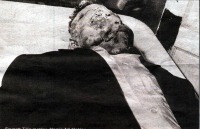 Throughout America’s sordid history, there have been many children murdered but the Murder in Money, Mississippi is the most infamous. It was this incident, the murder of a black child, fourteen year old Emmett Till that sparked the modern Civil Rights Movement. On August 28, 1955, Emmett Till, a fourteen-year-old black boy from Chicago supposedly whistled at a white woman in a grocery store.
Throughout America’s sordid history, there have been many children murdered but the Murder in Money, Mississippi is the most infamous. It was this incident, the murder of a black child, fourteen year old Emmett Till that sparked the modern Civil Rights Movement. On August 28, 1955, Emmett Till, a fourteen-year-old black boy from Chicago supposedly whistled at a white woman in a grocery store.
The crime sounded clarion calls for a nation to wake up – just look at the photo. Till’s mutilated corpse circulated around the country mainly because of John Johnson, who published the gruesome photographs in Jet magazine, a predominately African American publication. The photo drew intense public reaction.
Till didn’t understand or knew that he had broken an unwritten law of the Jim Crow South until three days later, when two white men dragged him from his bed in the dead of night, beat him brutally and then shot him in the head. That night the door to his grandfather’s house was thrown open, and Emmett was forced into a truck and driven away never again to be seen alive again. Till’s body was found swollen and disfigured in the Tallahatchie river three days after his abduction and only identified by his ring.
Till’s body was sent back to Chicago, where his mother insisted on leaving the casket open for the funeral and having people take photographs because she wanted people to see how badly Till’s body had been disfigured. This courageous mother was famously quoted as saying, “I wanted the world to see what they did to my baby” and over 50,000 people came to view the body.
On the day he was buried, two men — the husband of the woman who had been whistled at and his half brother — were indicted of his murder, but the all white male jury from Money (some of whom actually participated in Till’s torture and execution) took only an hour to return ‘not guilty’ verdict. The verdict would have been quicker, remarked the grinning foreman, if the jury hadn’t taken a break for a soft drink on the way to the deliberation room. To add insult to injury, knowing that they would not be retrial, the two accused men sold their stories to LOOK Magazine and gleefully admitted to everything.
Elsewhere in Mississippi at the time things weren’t going terribly well for blacks either. Just before Till was murdered, two activists Rev. George Lee and Lamar Smith were shot dead for trying to exercise their rights to vote, and in shocking testimony to the lack of law and order, no one came forward to testify although both murders were committed in broad daylight.
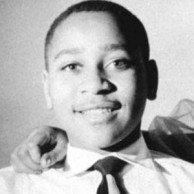 The next year, a former army sergeant, Clyde Kennard, tried to enroll at Mississippi South College in Hattiesburg and was sent away, but came back to ask again. For this ‘audacity’, university officials — not students, or mere citizens, but university officials — planted stolen liquor and a bag of stolen chicken feed in his car and had him arrested. Kennard died halfway into his seven year sentence.
The next year, a former army sergeant, Clyde Kennard, tried to enroll at Mississippi South College in Hattiesburg and was sent away, but came back to ask again. For this ‘audacity’, university officials — not students, or mere citizens, but university officials — planted stolen liquor and a bag of stolen chicken feed in his car and had him arrested. Kennard died halfway into his seven year sentence.
But times were slowly a-changing: Brown vs. Board of Education was decided in 1954. Three months after the Till murder Rosa Parks would refuse to move to the back of a bus in Montgomery, Alabama. Sit-ins and marches would follow, and soon the civil rights movement itself would be in full-swing. It’s been over sixty-years since the events of that fateful night, and I simply cannot find the words to describe this heinous crime that has yet to receive justice.
I’ll end by sharing these words by Maya Angelou: “History, despite its wrenching pain, cannot be unlived, but if faced with courage, need not be lived again.” And that’s my Thought Provoking Perspective…
YOU MUST SEE THIS!!!
Purchase “Just a Season” today !!!
Still Looking For The Great White Hope
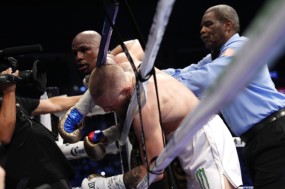 They are at it again! Since Heavyweight Jack Johnson who was the best boxer in the world more than a hundred years ago; they have been and still searching for the GREAT WHITE HOPE! Last night’s sparring match was no different. The fight was far from professional and how did they give a man who has never had a professional boxing match a fight for some kind of championship?
They are at it again! Since Heavyweight Jack Johnson who was the best boxer in the world more than a hundred years ago; they have been and still searching for the GREAT WHITE HOPE! Last night’s sparring match was no different. The fight was far from professional and how did they give a man who has never had a professional boxing match a fight for some kind of championship?
After all the hype, all the talk, and all the profanity, it simply was unrealistic to believe McGregor, the UFC champion, could beat Mayweather in their pay-per-view showdown last night at the T-Mobile Arena. So no one should have been surprised when Mayweather methodically broke down McGregor before scoring a 10th-round technical knockout. Honestly, I don’t think Mayweather broke a sweat the entire fight!
So what did we learn from this exercise? Well, it was entertaining! The best boxer on the planet and the UFC superstar brought a lot of attention to their respective sports, and those who spent $100 on pay-per-view and thousands to witness the bout in person must not have remembered that there is a sucker born every day. Surely this was not the best boxing has to offer. I guess McGregor was just happy he was still standing at the end.
Mayweather, who scored his first knockout since 2011, looked a bit rusty early on after having not fought in two years. His boxing inexperience showed, especially late in the fight when he tried to clinch. By the end, his face was a sitting target. As a boxing fan, this was a disgrace to me. However, I am glad the black guy got a 100 million dollar payday! And that’s my thought provoking perspective…
Two Of A Kind
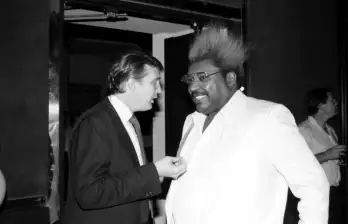 Of all the things in the world – I never thought I would be quoting Don King but seeing today’s world he has a point – “Only in America”! I never thought I would see the racism and bigotry of my youth return but with the Trump era – it has returned. If I were to compare the two, ironically, 45 and con-man Don are the same probably why Don endorsed him. There is no doubt that both men have a dubious history at best (according to public accounts). However, they ascribe to the same moniker “Only in America”.
Of all the things in the world – I never thought I would be quoting Don King but seeing today’s world he has a point – “Only in America”! I never thought I would see the racism and bigotry of my youth return but with the Trump era – it has returned. If I were to compare the two, ironically, 45 and con-man Don are the same probably why Don endorsed him. There is no doubt that both men have a dubious history at best (according to public accounts). However, they ascribe to the same moniker “Only in America”.
I won’t go so far as to say either Don see everything as racial or black and white. I will say they see everything as green. A con-artist sees capitalism as the way no matter who gets stepped on or in their way. It is all about cash and cash only! They will go anywhere and do anything for a buck.
The history books tell us about their despicable past and so do the boxers and people in the fight game. Don has robbed and taken advantage of every fighter he has been associated with – just think – he robbed Ali! He and the president have been sued by more people, probably, than anyone in history. So where else in the world could this happen but in America?
Not only did Don ripped off Ali but Tyson, Witherspoon and countless others and he made us think he was the greatest promoter on earth and 45 did the same to America. Corruption seemed to be the root of both of their business practices. Fact is to be involved in real estate and boxing one has to have mob affiliations but it is never spoken.
To both their credits, they can sell dreams like any good con-artist. They can pick your pockets, sell you a dream and make you thank them for it while picking your pockets! So I say only in America. They both should be called “the King of lies and naturally when things don’t work out; they both cry foul and become the victim! And that’s my thought provoking perspective…


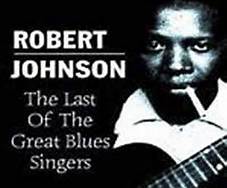
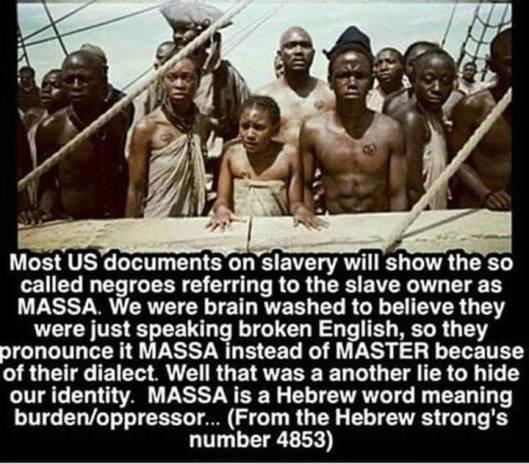






Ta-Nehisi Coates Explains Trump And Race
Share this:
1 Comment | tags: commentary, Donald Trump, PBS, Uncategorized, whiete | posted in African American, black issues, Obama, racism